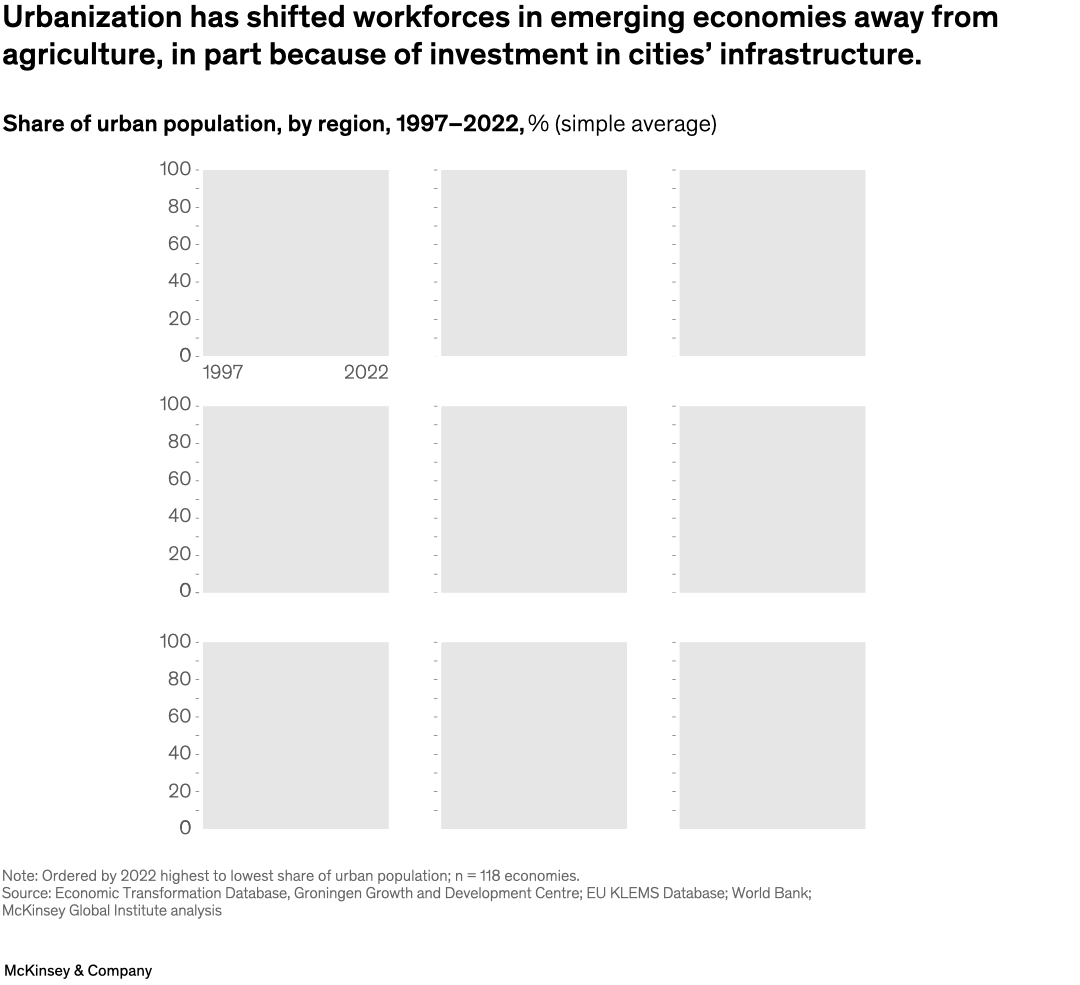Emerging economies in the “fast lane” of productivity growth—that is, those that could reach advanced-economy productivity levels in the next 25 years—have made great strides, in part due to urbanization. According to Chris Bradley, a senior partner and a McKinsey Global Institute director, and coauthors, fast-lane economies tend to have better developed city infrastructure and buildings, creating environments more conducive to investment and growth. The urban share of the population in emerging economies has increased on average by nearly ten percentage points over the past quarter century.

Image description:
Nine area graphs show the share of urban population from 1997 to 2022 by a regional or economic archetype, which cover 118 economies. Each shows a different volume and angle of increase. The share of the urban population in advanced economies by 2022 is more than 80%, at a relatively flat angle of change since 1997. In the Middle East and North Africa by 2022, it’s also more than 80%, at a relatively flat angle of change since 1997. In Latin America and the Caribbean by 2022, it’s around 80%, at a relatively flat angle of change since 1997. In Eastern Europe by 2022, it’s around 60%, at a very flat angle of change since 1997. In China by 2022, it’s more than 60%, at an acute upward angle of change since 1997. In Central Europe by 2022, it’s around 60%, at a relatively flat angle of change since 1997. In sub-Saharan Africa by 2022, it’s more than 40%, at a relatively flat angle of change since 1997. In emerging Asia by 2022, it’s around 40%, at a relatively flat angle of change since 1997. In India by 2022, it’s more than 40%, at a relatively flat angle of change since 1997.
Sources: Economic Transformation Database, Groningen Growth and Development Centre; EU KLEMS Database; World Bank; McKinsey Global Institute analysis.
End of image description.
To read the report, see “Investing in productivity growth,” March 27, 2024.